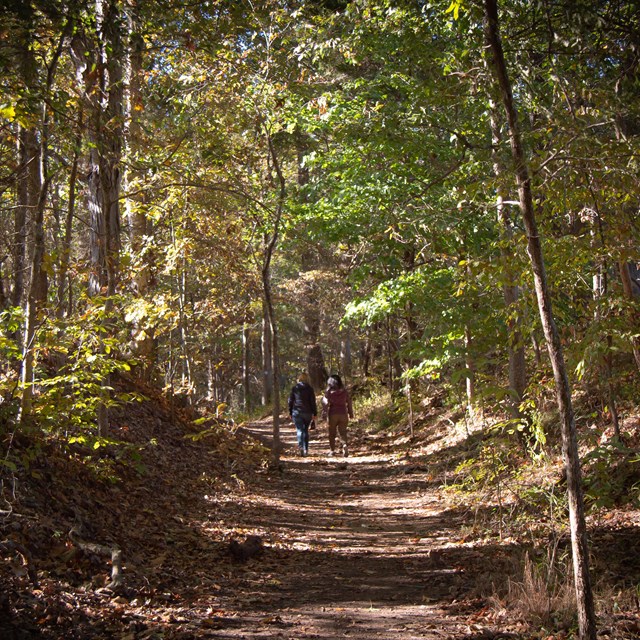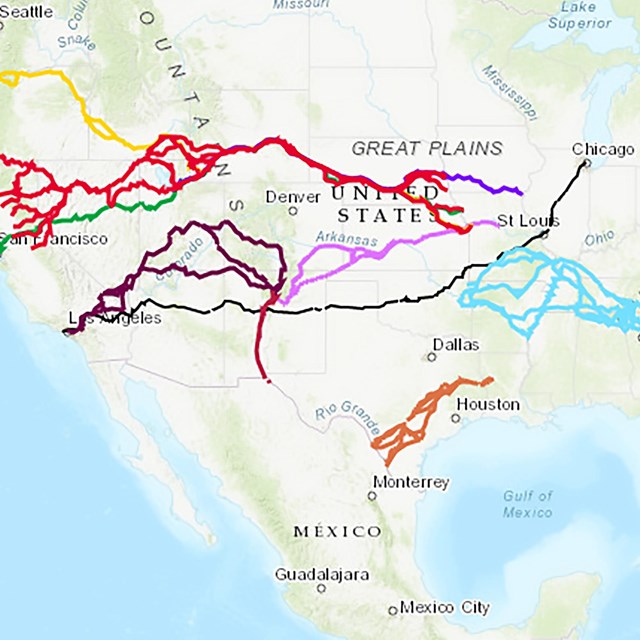Last updated: May 21, 2023
Article
Trail of Tears: Western Arkansas & Oklahoma Itinerary

Each site in this itinerary focuses on the western end of the Trail of Tears as detachments arrived in Indian Territory. Water route detachments passed by Fort Smith and with one glance left behind the US and entered Indian Territory.
Use this itinerary to retrace the path of those arriving in Indian Territory and rebuilding the Cherokee Nation. Depending on how much time you spend at each site, this is a one- or two-day itinerary.
Contact each site for visiting information, including hours of operation.
Itinerary Map
History
Prior to Forced Removal
Some Cherokee recognized the likelihood of forced removal and moved west to Arkansas prior to the Trail of Tears in 1838-1839. Still faced with discrimination those Cherokee relocated again, this time to Indian Territory (part of today’s Oklahoma). These “Old Settlers” established their own government.
Others who chose to leave early included those in the Treaty Party, a dissident group of Cherokee that negotiated a treaty with the federal government (signed at New Echota in 1835) accepting millions of dollars and agreeing to move west. Some of these party members traveled in the B. B. Cannon detachment that passed through Cane Hill in 1837.
Sequoyah, the creator of the Cherokee syllabary (alphabet), moved to Indian Territory before forced removal. He built his cabin near Sallisaw in 1829. He was an active advocate for Cherokee Nation political reunification in their new lands.
Indian Territory
After the 1838-1839 detachments crossed into Indian Territory many went to designated disbandment depots such as the one near Stilwell. The Treaty of New Echota promised one year of subsistence provisions yet supplies were irregular. Many Cherokee lived in tents waiting for their first year’s crops.
Cherokee transported not only themselves but also their lifestyle, as is illustrated at the Murrell home in Park Hill (near Tahlequah) and the stories told in Webbers Falls. The last detachment of Cherokee to leave their homelands arrived at Webber Falls before heading north to a disbandment site near Tahlequah.
A visit to the Cherokee Heritage Center in Park Hill connects the Trail of Tears to the modern visitor, highlighting what the Cherokee endured and how they are still a nation—the largest tribal nation in the US.
Trip Itinerary
- Sites: Fort Smith National Historic Site, Trail Of Tears National Historic Trail

Fort Smith witnessed life on the edge of Indian Territory, and the park tells its stories through the experiences of soldiers, outlaws, and lawmen. For those on the Trail of Tears, it was the last point of federal land before entering Indian Territory. The site has in-depth exhibits about Indian removal.
- Trail Of Tears National Historic Trail
Webbers Falls Oklahoma
- Trail Of Tears National Historic Trail
Cane Hill - Trail of Tears
Trail of Tears site. Where B B Cannon contingent stopped overnight at their last stop before reaching Indian Territory at the Bean Farm near Stilwell.
- Trail Of Tears National Historic Trail
Sequoyah’s Cabin
- Trail Of Tears National Historic Trail
Stilwell, Oklahoma - Trail of Tears
- Trail Of Tears National Historic Trail
Hunter's Home
Hunter’s Home is the only remaining pre–Civil War plantation home in Oklahoma. A kitchen garden, field crops, animals, log cabin, and the historic home give visitors a window into life on an antebellum Cherokee plantation.
- Trail Of Tears National Historic Trail
Fort Gibson State Historic Site

Active from 1824 through 1890, it was at first the westernmost US military fort and was a key to US military strategy, inasmuch as the fort held more soldiers than any other fort located west of the Mississippi River. The fort was also a dispersal site for the Seminole and Creek Indians after their long journey from their homes in the southeastern United States.











